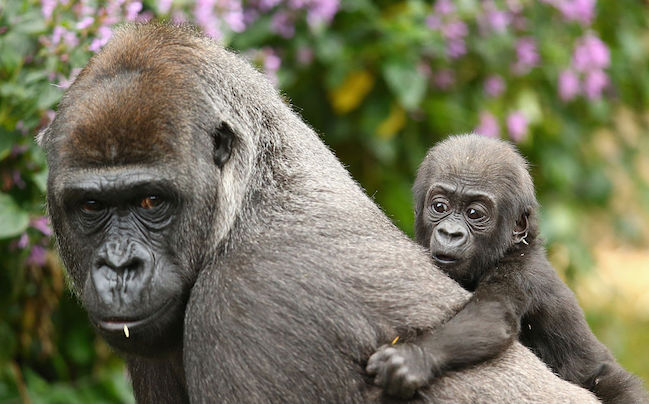
Forty-three scientists from around the globe co-authored an article that discusses the potentially grim future of the planet’s megafauna (animals over 90 pounds). Titled “Saving the World’s Terrestrial Megafauna” the study was published today in the latest Oxford Journal’s Bioscience, and claims that dwindling numbers among certain animal populations are — to be blunt — mostly humanity’s fault. The piece singles out several species at risk for complete extinction, including the Western gorilla, black rhino, and Bengal tiger. The authors collectively call upon the “broader international community” to join together in helping maintain and grow the remaining large animals on Earth.
These animals, say the scientists, are at risk partially because of “escalating” habitat loss, persecution, and exploitation. “Various anthropogenic forces such as deforestation, agricultural expansion, increasing livestock numbers, and other forms of human encroachment have severely degraded critical habitat for megafauna by increased fragmentation or reduced resource availability,” they write.
Poaching is also a major contributor. Elaborating on “persecution”— which they define as “shooting, snaring, and poisoning by humans ranging from individuals to governments, as well as by organized criminals and terrorists” — the authors warn that mammalian megafauna in particular faces dramatic “range contractions and population declines”:
“59% of the world’s largest carnivores … and 60% of the world’s largest herbivores … are classified as threatened with extinction on the International Union for the Conservation of Nature (IUCN) Red List. This situation is particularly dire in sub-Saharan Africa and Southeast Asia, home to the greatest diversity of extant megafauna.”
The article also points out that keeping these species around is financially beneficial to humans, because in many developing countries, experience-based ecotourism is the fastest-growing subsector of tourism.
The study concludes with a two-part call for action: “the need to further and more effectively implement, expand and refine current interventions” and “a need for large-sale policy shifts and global awarenesses in funding for conservation to alter the framework and ways in which people interact with wildlife.”
(Via: Bioscience)






